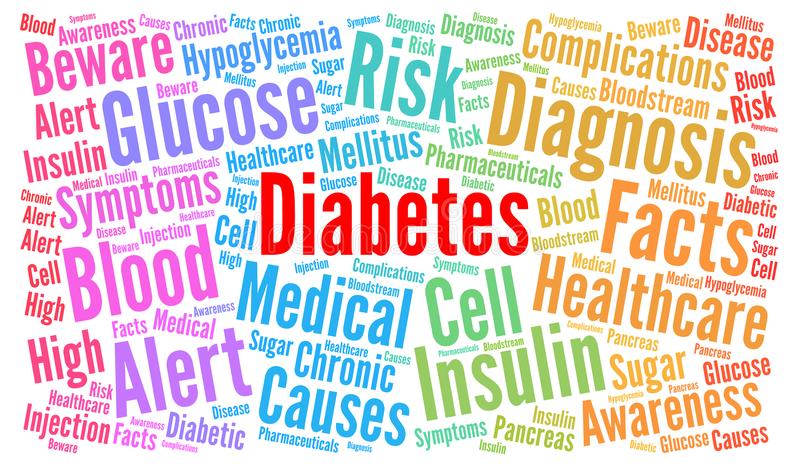The lifestyle of modern man has a great share of responsibility on the outbreak of a few quite serious & dangerous diseases. Obesity, hypertension, depression and diabetes are just some of the modern diseases.
Meaning,
-Sedentary life with no physical exercise.
-Poor diet with consumption of high amounts of processed foods.
-Poor sleep schedule (or severe sleep problems / disorders).
-Disorders on food consumption (from an early age).
-Intense stress and a variety of responsibilities (from an early age).
In fact, these diseases are the greatest problem of our century.
Diabetes Mellitus – What it is and How Manifested
It is a complex metabolic disorder of the organism, a metabolism disorder of carbohydrates / proteins / fats, resulting in an increase in sugar concentration sugar in the organism.
A key feature of diabetes is hypoglycemia (in a chronic form). In other words, we are talking about the state of organism where blood glucose levels (sugar levels) fall below the normal range.
The body enters this state due to insufficient production or availability of insulin produced by the organism.
Diabetes is not a simple disease, requiring systematic control, great care and attention, even associated with other serious diseases, such as:
- cardiovascular diseases
- the stroke

There are 3 forms of diabetes. Gestational, type 1 and type 2 diabetes.
This article presents a discussion on diabetes type 2, where a majority of diabetes cases is observed. This form of diabetes exceeds 90% of patients suffering from diabetes, associated – as many scientific studies emphasize – with poor diet and clearly with obesity and lack of regular exercise.
Diabetes – Age limits
Unfortunately, the dramatic deterioration in modern lifestyle (a situation described by various factors of individual’s daily life) has brought the age limit to a very young age.
An increasing number of children (even a child as young as 4 years old has been reported as a case) seem to be dealing with this serious illness, following them for the rest of their lives.
Isn’t this a warning for changing our lifestyle?
Worth making this question as parents of children, determining their future.
Whether a child will develop diabetes – as already mentioned – is a function of many factors. The child’s gender, race, DNA (certainly heredity), diet, lifestyle, and even the living and growing environment, play a role.
Children with diabetes have insulin deficiency or simply the insulin produced is not active. Fat is the basic responsible for insulin ineffectiveness.
How this happens?
When a child (or an adult) is obese and suffers from diabetes, its increased adipose tissue increases the production of specific hormones by its organism. These hormones (the basic example is leptin) resist the action of the hormone insulin, by fighting it.
The organism realizing the problem, forces pancreas (the organ where insulin is produced) to produce increasing amounts, for meeting the higher requirements.
Gradually this condition – out of balance – leads to the appearance of what we call diabetes.
Diabetes – Main Symptoms

Usually when the first symptoms of the disease start to appear – being perceived by the sufferer – it has already advanced to the next stage.
The first stages of the disease are most often completely asymptomatic, making it extremely difficult and completely unlikely to identify the problem.
Here are the first symptoms noticed relating to the disease:
- increased blood sugar
- intense feeling of fatigue
- thirst
- polyuria / frequency
- polyphagia
- dry mouth
- weight loss
- blurred vision
- atherosclerosis
- drowsiness
- inability to concentrate
- increased appetite
- frequent infections
- frequent occurrence of fungi in the genitals
- gingivitis
- periodontitis
- fungal infections of the nails
- muscle fatigue / physical weakness
- skin problems
In a number of other diseases, as those below, regular checkups for diabetes is recommended.
- autoimmune diseases
- thyroiditis
- the various diseases of the pancreas
- gluten intolerance
- polycystic ovary syndrome
Exercise Contribution to Disease Prevention
Exercising regularly is probably one of the main preventative measures against such a serious illness.
However, exercise not only helps in disease prevention, but in its regulation as well.
What exercise achieves actually is to reduce the concentration of sugar in the blood dramatically and – surely – to increase the organism’s sensitivity to insulin.
This helps in the metabolism of carbohydrates, proteins & fats, enhancing the overall good physical / psychological / mental health of the individual.
Exercise also strengthens the heart and improves its proper functioning, improves the respiratory system, enhances the mental health of the individual and helps in the effective (and healthy) control of its body weight.
Systematic exercise may significantly delay the onset of the disease in people with a genetic predisposition.
Therefore it’s very important – from an early age (from childhood ideally) – to obtain an education for a healthier lifestyle and diet to favor the later course of our lives.
Aerobic Exercise or Exercise with weights

Aerobic exercise and weight training / resistance training are equally important in treating diabetes.
However, physical activity should obey some important rules (concerning people suffering from the disease).
Aerobic exercise works in addition to weight training & resistance
Aerobic Exercise
Increases heart rate and strengthens the respiratory system dramatically, stimulating the metabolic rate of organism, allowing greater and faster burning of stored adipose tissue in the organism.
All this has a direct consequence of controlling the sugar concentration in blood and its final reduction (since the organism for saving energy turns to glucose metabolism).
Exercise with weights / resistance
On the other hand, exercising with weights and resistance, is not really aiming at body fat loss, but at rapid increase in muscle mass, which ultimately (indirectly) leads to faster fat loss.
Muscles use glucose as a fuel, as energy source to feed.
NOTE: What you need to understand is that aerobic exercise helps your body manage insulin better, while weight training increases your body’s sensitivity to insulin, helping you control your blood sugar levels.
How Should I Exercise?
For effective exercise on controlling the disease, this must be systematic and completely consistent. This practically means a minimum of 30 minutes 5 days a week of necessary exercise.
The exercise selected may be aerobic or weight training or even a combination of these two forms.
In fact, if you have a time problem you can even break those 30 minutes required on a daily basis, to two periods of 15 minutes each.
Try walking, for example, doing everything by walking.
Engage in a sport / sport / dance / activity.
Take care of your garden and plants.
Ride a bike.
Make swimming.
Become a member of a gym or just buy 2 weights and exercise at home whenever you have 15 minutes free time.
It’s simple as long as you make the decision and really want to improve your health and your daily life.
What Should I Watch out

If you suffer from diabetes and this has created side effects or undesired conditions, then before you start any form of exercise it would be good to consult your attending physician doctor.
Medical monitoring is required especially for people with:
- problems of the cardiovascular system
- kidney diseases
- diseases of pancreas
- high blood pressure
- neuropathy
- peripheral vascular disease
TIP: During this entire effort it is wise to reorganize and rebuild the nutritional program followed (a fact emphasized by your doctor).
Proper nutrition combined with regular exercise can significantly improve your life quality and help control the disease effectively.






